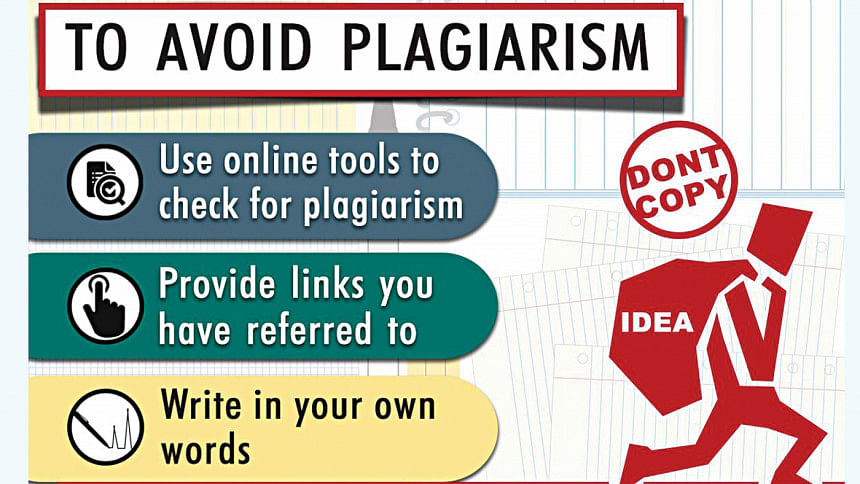How not to steal somebody’s work: Plagiarism

In today's world of free flowing ideas and open content on the web, plagiarism is often a matter of concern, across all industries with a creative element.
Sometimes, an over-enthusiastic writer may fall prey to this act unawares, but the more sinister side of the issue is blatant and deliberate stealing of someone's, writer or artist, creative property without attributing them as the source and creator of the product.
There are of course complicated legal aspects to the issue, but truthfully the crux of the matter lies in personal integrity, increasingly in short supply. Bluntly put, plagiarism is the act of claiming someone else's work as your own, or simply stealing it.
According to the Merriam-Webster, plagiarism is "to steal and pass off (the ideas or words of another) as one's own." In the words of Oxford, "it is the practice of taking someone else's work or ideas and passing them off as one's own," and Princeton defines plagiarism as "the deliberate use of someone else's language, ideas, or other original (not common-knowledge) material without acknowledging its sources."
In the pursuit of fame and name, many bigwigs in the academia have fallen prey to the easy way provided by plagiarism, rather than taking the high road of truly working for the acclaim so dearly sought, and so difficult to attain.
Of course, new ideas are no more found a dime a dozen, centuries of scholarly and artistic pursuits have seen to that, and there is nothing wrong with taking inspiration from someone's work, or developing an existing idea further, or coalescing your thoughts and another's is nothing but natural progression of collective thought development. However, in that pursuit, people must remain vigilant to not appropriate another's creative work or concept as their own, and ensure due credit and citation, to avoid plagiarism.
In academia or scholarship, accidental plagiarism is marked when even if the source material is cited but the material is not put in quotation marks in the correct way, or even if the writer has permission from the original owner, but fails to cite in full details. For students, this has more than just the consequences of getting caught. Rather, it stops the student from obtaining the real benefit intended by the exercise, as they do not do the requisite research or in-depth study required for it, and also show them to be of a lazy and even corruptible nature, which can raise questions on their future employability, especially in case of getting good recommendations.
But plagiarism is not restricted to just the academia. In fact, fashion and all the creative arts like music, literature and poetry are rife with acts of plagiarism, and even the Nobel winning Tagore has been accused of being "inspired by" and setting words to tunes hitherto unheard in the Indian Sub-Continent, but quite wildly well known in Europe, like the Scot folk song Auld Lang Syne, which will distinctly and unmistakably remind you of Purono Shei Din-er Kotha!
One may ask, what is so wrong in being "inspired by" another artist's work? Nothing. In fact, a lot of creative work will appear to have a trend, where the pioneer artist will introduce a technique or colour or instrument use which others will adapt and include. But the issue of morality demands that appropriate credit must be given for it to appear and be a thoughtful and responsible use of someone else's hard work, otherwise it becomes an act of stealing.
In a world where exchange or proliferation of information is so much easier, it is also increasingly easier to catch the acts of stealing intellectual property. The threat of getting caught aside, it is also the moral duty of all content creators and scholars to be upfront about the authenticity of their work.
Photo: Collected

 For all latest news, follow The Daily Star's Google News channel.
For all latest news, follow The Daily Star's Google News channel. 



Comments